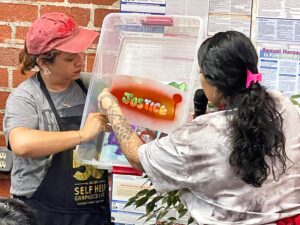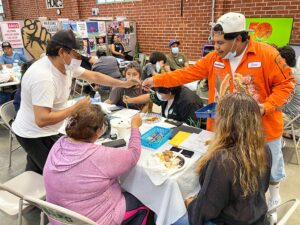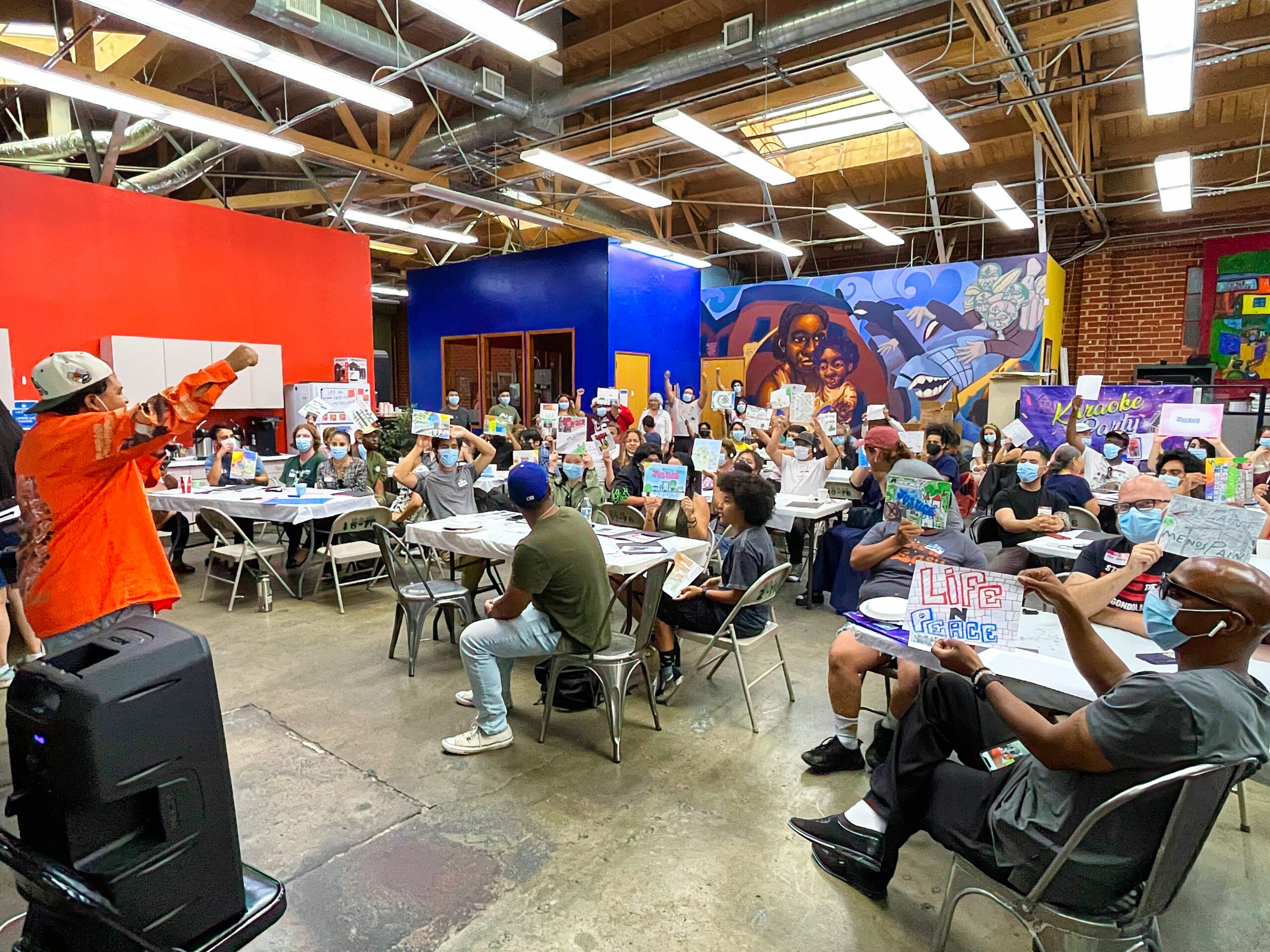
July 12, 2024
By SAJE Staff
On Thursday, July 11, SAJE hosted community members for a conversation about Oceanwide Plaza, aka the “Graffiti Towers,” a high rise complex in downtown Los Angeles that was abandoned by developers last year. The towers have become emblematic of Los Angeles’ housing crisis and the people’s right to the city. The site is now a canvas for graffiti artists and a launch pad for BASE jumpers, among other uses.
Self-Help Graphics & Art, a community arts center in East Los Angeles, co-hosted the event, and artists with the organization led hands-on painting and graffiti sessions for attendees interested in getting creative. 
The conversation started with a reflection on the meaning and purpose of graffiti. Attendees talked about how even though it is an art form, it’s often criminalized, unlike other forms of art or advertising in public spaces. One attendee said, “It is part of LA culture, and it needs to be respected.” Another said graffiti was their first introduction to art growing up. Presenters also talked about its history, and how it has been used as a tool for political resistance. Self-Help Graphics facilitated a painting workshop that encouraged participants to reimagine the Graffiti Towers by collaging a picture of them into a new landscape.
The conversation then turned to the history of the Graffiti Towers, and why they stand empty. The development, estimated at $1 billion to complete, was supposed to comprise 500 luxury condominiums, a hotel with 184 rooms, and retail space. Construction began in 2015, but the site was abandoned a few years later, after the developers ran out of money.

It is unclear what the fate of the project will be. The city plans to spend $4 million dollars to remove the graffiti and put a fence around the site. The property is for sale, but the cost of finishing construction may make the buildings prohibitively expensive to purchase.
Attendees had a brief breakout discussion. One participant said, “This was a rich people project, and rich people get to spend money however they want. It only became a problem for the city when poor people started taking up that same space.” Someone also argued that the city should buy the building and turn it into affordable housing. “There’s no housing crisis except that they won’t let us in,” said another attendee, reflecting on vacancy rates in luxury apartments across the city.
The evening concluded with a presentation on the problems with our for-profit housing model and how that model is driving the affordable housing and homelessness crisis in Los Angeles. Attendees heard about alternatives to for-profit housing that SAJE and allies are working on, including a push for more public investment in the form of social housing and land trusts through the funds that Measure ULA is generating for the city.
If you’d like to get involved in SAJE’s social housing committee, email info@saje.net.

